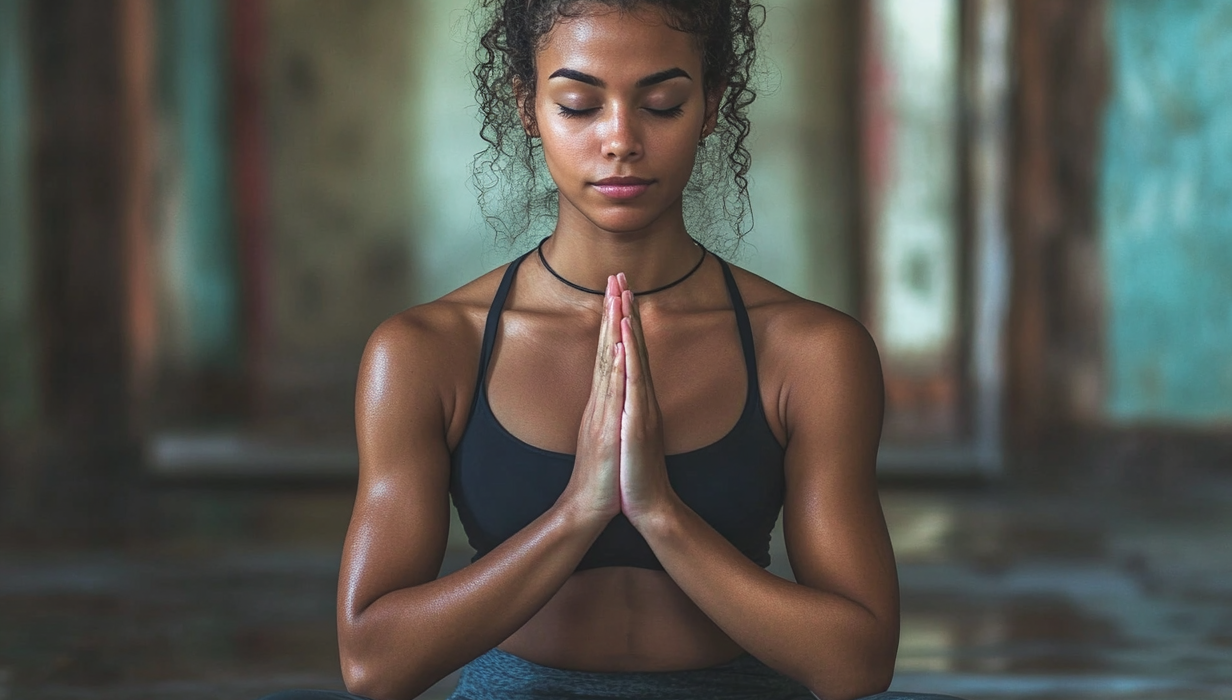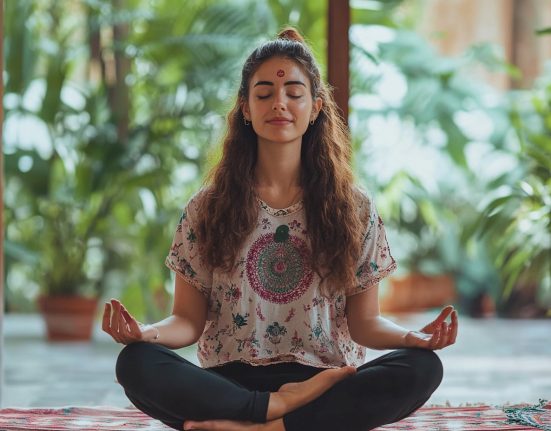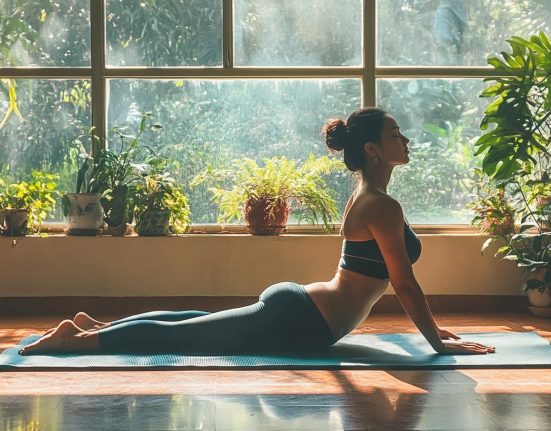Learn more about different yoga styles and how to make your yoga workout more effective—and enjoyable.
When you imagine a yoga class, you might picture rows of mats topped by people resting in Child’s Pose or Savasana. Depending on the particular style, however, the poses go far beyond those sleep-promoting positions and can get your heart pumping.
Can a dedicated yoga practice really deliver all of your health-promoting and longevity-boosting needs? We spoke to fitness pros to find out.
What Is Yoga?
“Yoga is one of my favorite forms of exercise simply because it is accessible to pretty much anyone,” says Tamara Teragawa, an instructor for YogaSix in Los Angeles and an XPRO for Xponential+. “Since there are several different styles of yoga, every individual can find one that works for their body and attain specific goals.”
Hatha yoga is probably one of the most common types of yoga you’ll find in the US. In most basic terms, Hatha yoga refers to the practice of physical yoga postures or asanas that often flow from one to the next. Several types of yoga fall under Hatha yoga, each with its own personality, including Ashtanga, Vinyasa, Iyengar and Power Yoga.
Hot yoga is similar to Hatha yoga but is performed in a room that’s heated to 85-105° F. There are several types of hot yoga, too, including Bikram yoga, Baptiste yoga and Forrest yoga.
If you’re looking for yoga that mixes in more breathwork and mantras, you’ll want to give Kundalini yoga a try. Or if you just need to chill out and get centered, look for Yin yoga or Restorative yoga classes. Some Restorative classes are tailored to those with trauma-related conditions, including post-traumatic stress disorder (PTSD).
“Yoga is great to incorporate into your schedule, whether you are just starting your fitness journey, recovering or preventing injuries or other health issues, or to cross-train with other modalities of exercise,” explains Teragawa.
Teragawa says yoga is complementary to many activities, including Nordic walking, cycling, running, resistance training and even gardening.
Why Yoga Is Such a Great Form of Exercise
Exercise in general has been shown to have mental health benefits—and yoga is no exception.
According to the National Center for Complementary and Integrative Health, yoga improves mental and emotional health, lowers stress levels and can help ease symptoms of anxiety, depression and PTSD. Yoga also increases the likelihood of a restful night’s sleep.
Chronic inflammation has been found to be a culprit behind many conditions, including heart disease, cancer, diabetes and arthritis. According to a 2022 review in Brain, Behavior & Immunity—Health, a regular yoga practice may reduce chronic inflammation. This may be in part due to yoga’s ability to lower cortisol, the stress hormone that is associated with increased inflammation, as well as other classical markers of inflammation in the body.
A 2022 review in The International Journal of Environmental Research and Public Health found evidence that yoga may improve health-related fitness, especially muscle strength and cardiorespiratory fitness. The types of yoga that would be more likely to incur these benefits include the Hatha-type yogas and hot yogas.
Because it’s low-impact and nearly infinitely adaptable to suit people of all fitness and flexibility levels, Teragawa says that “yoga can simultaneously increase both muscular strength and mobility while also helping to reduce stress.”
And since yoga is gentler on the body than, say, running or strenuous strength training, you may be able to incorporate it into your schedule more often. “Personally, I enjoy some form of yoga pretty much every day,” says Teragawa. “However, not everyone can make that happen or will even enjoy that! The amount one should do yoga is really up to the individual and their personal goals. The more consistent you can be, the more progress and benefits you will see.”
Can Yoga Alone Cover My Exercise Needs?
With all of that in mind, if you were to step up your yoga practice to nearly every day, would it help you meet the exercise recommendations for health and longevity?
The 2018 Physical Activity Guidelines for Americans recommend that each week, adults rack up:
- At least 150 to 300 minutes of moderate-intensity aerobic exercise, or
- 75 to 150 minutes of vigorous-intensity aerobic physical activity, or
- A combo platter of the two options above
In addition to aerobic exercise, the guidelines also recommend at least two days of strength training per week.
“Preferably, aerobic activity should be spread throughout the week, and you can gain additional health benefits by engaging in more above and beyond that,” says Jacqueline Crockford, DHSc, Senior Product Manager for the American Council on Exercise and ACE-certified personal trainer.
“Adults should also do muscle-strengthening activities of moderate or greater intensity and that involve all major muscle groups on two or more days a week, as these activities provide additional health benefits,” adds Crockford.
If you’re just beginning your yoga practice, Teragawa suggests scheduling several shorter sessions multiple times a week instead of one long session once or twice each week. “This will help you develop more consistency and get into the habit of recognizing how to honor yourself based on what your body needs each day,” explains Teragawa. “If you can make time to practice yoga at least three to five times per week, even if it’s only for 30 minutes, most people will begin to reap the health benefits of their practice.”
So considering all the different types of yoga, if you choose wisely, it is possible to check all of your boxes for the exercise requirements for health.
“Even if yoga is the only form of physical activity someone engages in, a Hatha or Vinyasa-style practice every day for a minimum of 30 minutes would likely meet the minimum recommendations,” says Crockford.
But if your goals go beyond base-level fitness, you might need to consider sprinkling in other forms of exercise, like walking and weights.
While yoga can be considered “enough” of a workout, “yoga typically does not address pulling strength of the muscles, developing fast-twitch muscles or adding progressive overload when it comes to strength training,” says Teragawa. “I am also a strong believer in adding variety to your workout regimen to avoid plateauing and to help decrease the chances of injury, so these are also things to consider when deciding whether or not you would like to make yoga your only form of working out.”
If weight loss is your goal you might need to step things up, adds Crockford. With that said, regarding health, there is research that suggests that physical activity is more important than weight loss.
“If the goal is to lose weight solely through strenuous physical activity and they are practicing Yin yoga, which is very relaxing and restorative, it may not be effective for that client,” explains Crockford. “But if a client is interested in improving flexibility, awareness, reducing stress, increasing strength and endurance, then regularly practicing a Vinyasa style of yoga might be incredibly effective. There are a lot of factors at play but the short answer is yes, yoga is a great tool for anyone to use as part of a balanced training program.”
4 Ways to Make the Most of Your Yoga Workouts
No matter what your goals are, these tips from Teragawa and Crockford will make it easier—and far more enjoyable—to keep calm and flow on.
1. Make It a Habit
“Regular yoga can help you develop better mobility and strength, quicker and more efficiently, simply by establishing a solid yoga schedule,” says Teragawa. “In addition to the physical benefits, consistency will help reveal the mental, emotional and overall wellness benefits even more.”
Five half-hour sessions per week or more should be the ultimate aim if yoga is your main form of exercise.
2. Get an Assist
“Many people are under the impression that props in yoga are for those who ‘can’t,’ which makes people feel they are not good enough and allows the ego to convince us not to use them,” says Teragawa. “This is a common misconception, though! Yoga props can oftentimes not only help make yoga poses more accessible but even more challenging at times, [allowing students to] honor where their body is each day.”
Employ things like blocks and straps to help develop your yoga practice safely and eventually to help you progress more deeply into postures.
3. Try Something New
This could be a change in location, time of day or the instructor, advises Crockford.
“Adding variety will make it easier to avoid a plateau and will keep things fresh. It can also add a different perspective on things, as each teacher has their own style and way of instructing postures and transitions,” adds Teragawa.
If you don’t belong to a studio, consider joining a virtual class from your local or any global gym, download an app like Down Dog, try this at-home yoga sequence to improve strength and flexibility or stream a free YouTube class from Yoga with Adriene.
4. Listen to Your Body
“Yoga on one day may not look or feel like the same thing on the next day. Give yourself some grace by allowing your body to be your guide to know how and in what poses it’s appropriate to challenge yourself. This creates awareness, which is important both on and off the mat,” says Crockford.
Instead of simply copying everything an instructor is telling you to do, notice how it feels in your body and recognize what you may want to adjust to truly honor where you and your body are at in that moment, adds Teragawa.
The Bottom Line
Different types of yoga can fulfill the various components of fitness, including cardiorespiratory fitness, muscle strength and endurance, flexibility and balance. Yoga can also improve many markers of overall health and disease prevention, in part, because it has been linked with reduced inflammation.
If yoga is the only form of exercise you’ll be getting, find a practice you’ll enjoy committing to for at least 30 minutes, five days per week, that you’ll be able to stick with consistently, and that gets your heart pumping and challenges your muscles. If you’re not currently active, you’ll want to ease into it by doing shorter sessions starting with a couple of times a week and working up from there.
The goal of any fitness program, including yoga, should not be solely about weight loss, as there are so many other benefits to being physically active that have nothing to do with moving the needle on the scale. “The effectiveness of a yoga practice is based on your goals and mindset. Yoga is not a form of fitness that will get you results extremely quickly, but rather, the process and consistency will help you learn about your body and train your mind,” concludes Teragawa.









